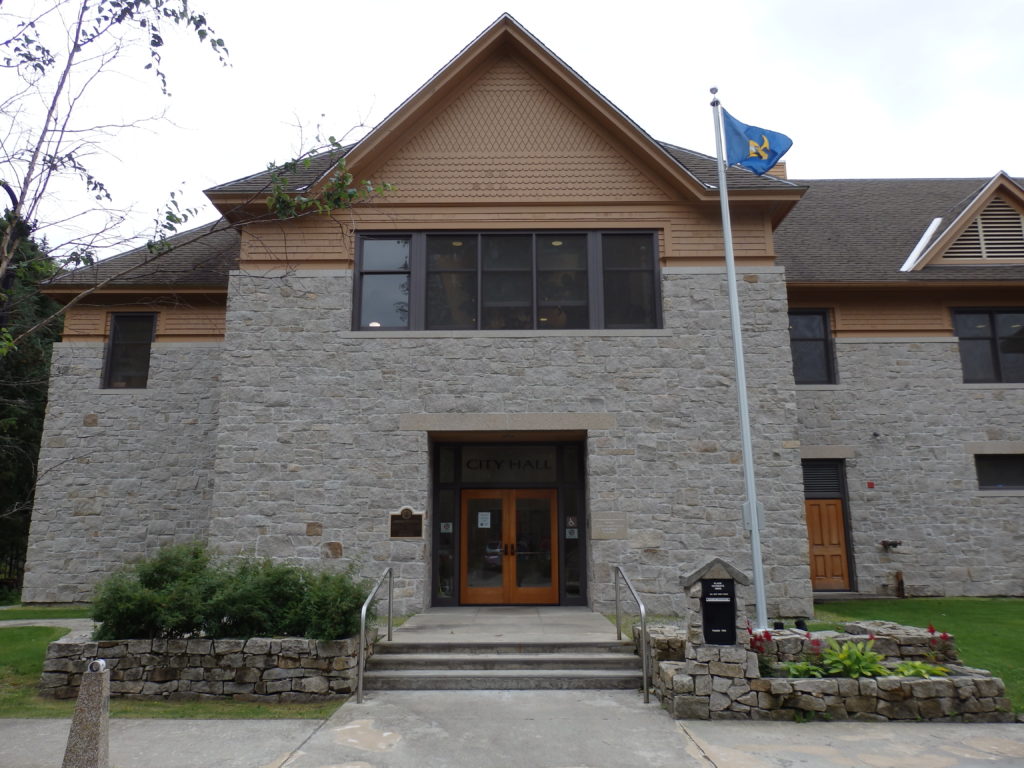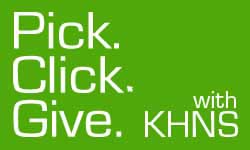
Ferry chief Mike Neussl. (Jillian Rogers)
About 50 people showed up to show support and share ideas at the Alaska Marine Highway System community engagement meeting on Thursday. Haines was the last stop on a six-town tour for the Department of Transportation officials. The goal was share facts and figures, and get community input on possible solutions to a dwindling schedule.
It took four attempts for Capt. Mike Neussl and his crewmate to get to Haines. Planes were grounded because of weather, so they eventually arrived on the ferry. And when they showed up at assembly chambers, they weren’t greeted with a frustrated mob protesting proposed cuts. Instead, they were serenaded by the community women’s choir.

Women’s choir members serenade Neussl with a song about ferries. (Jillian Rogers)
After the crowd settled down, it was all business. The room was full, but not standing-room-only full. Neussl got to work discussing budget shortcomings, and recent tweaks to the system implemented as cost-cutting measures. He listened to comments and suggestions, none of which he hadn’t heard before. But he commented and gave kudos where it was due.
First, the budget. Neussl says there’s a request for $92 million in the FY17 state budget. That’s a low-ball option, because asking for what they really need simply wouldn’t happen.
“That funds, in our case, option D, a pretty low level of service because quite frankly, the state has a budget crisis on its hands,” Neussl said. “We would be foolish to say ‘well, no, we’re going to take option A with 400 weeks of service’ that’s the budget we’re going to put forward. That’s not fiscally responsible, so we obviously didn’t do that.”
In FY15, the ferries earned a record-high $53.9 million in revenue, up five percent from the year before. But its costs were about $165 million. Funding from the state general fund makes up that gap. All of the revenue goes back into the ferry system to cover the costs. Also last year, the fleet carried more than 300,000 passengers and around 106,000 vehicles, making nearly 6,500 port calls. That equated to 378 ship weeks of service.
The final marine highway schedule for the summer isn’t out yet. Neussl says it’ll be posted in January. And while ferry officials asked for that $92 million, the budget has to get approved in the legislature. As we learned from last spring’s near-government shutdown, that process is long and contentious.
“What happened last year was we made that operation plan and we published a schedule based on that operation plan and then that budget started getting chopped,” Neussl said. “And if that budget gets chopped, there’s less and less funding available to actually run the schedule that we published.”
The system is currently facing a $15.9 million shortage in its state operating fund compared to last year. As well, it’s getting $4 million less in its state capital fund. As a result, the Taku is sitting on the sidelines in Ketchikan and has been out of service since June. And more ships in the fleet are slated to sit, not sail, next year.
“We essentially have an 11-ship fleet, but we only have funding and the ability to run nine of those ships for the most part, for the year. Or 10 of them, other layups are listed in there as well,” Neussl said.
Cost-cutting and money-making measures like reducing services on ships, eliminating ferry positions, raising ticket prices, and reducing marketing have already happened. So the Department of Transportation is turning to ferry-users themselves for ideas on how to make and save money.
Several people spoke out with ideas. Bolstering efforts to attract more ferry-riding tourists, eliminating the Bellingham or Prince Rupert stops, and cutting the Juneau run short at Berners Bay were a few of the ideas brought forward.
“What we should really be doing is enhancing our marketing system to make sure that we have many more customers wanting to come to Alaska,” said Haines resident Tresham Gregg. “Put two ferries going into Bellingham, make them wonderful to travel on. Everyone’s looking for a wonderful, safe place to travel to, well, we have it. We just have to market it.”
Rob Goldberg suggested modifying the two Alaska Class ferries already under construction in Ketchikan so they have crew quarters. That would allow the vessels to have longer continuous run times and sail the Juneau-Haines-Skagway loop. Goldberg says the plan right now is for one boat to go Juneau-Haines and back to Juneau, and one to make multiple daily trips back and forth between Haines and Skagway. As the design stands now, those two vessels wouldn’t be able to operate for more than 12 hours at a time.
“I think they would be quite serviceable ships for running this loop, but they have to be able to work more than a 12-hour day. They have to have crew quarters,” Goldberg said.
Neussl listened to the concepts and comments, and gave pros and cons for the ideas. There is no easy solution, he says. But that’s why he came to Haines – to hear from those who use and need the ferries the most.









